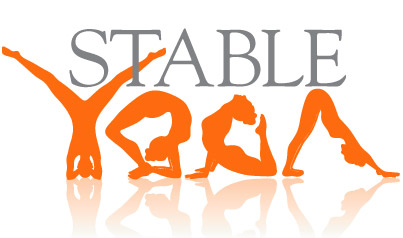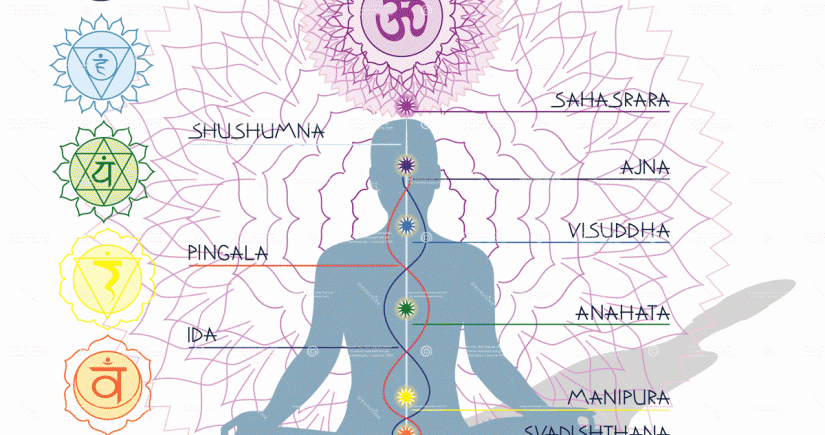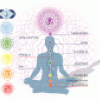- Posted by Lucy
Introduction to the Chakra System
The ancient yogis of 2,000+ years ago knew nothing of oxygen, the circulatory or neurological systems, let alone the endocrine system of glands and hormone secretions. Therefore, it is extraordinary that they concluded some very close equivalents - presumably through the heightened awareness of body, mind and breath that yoga can bring. They knew that a vital life force they called ‘prana’ came in on the breath and that this energy travelled around the body, they concluded, in 72,000 energy channels, or ‘nadis’. They called the 3 principal nadis the shushumna, running vertically from the base of the spine to just beyond the crown of the head, the ida and the pingala nadis, with the latter two criss-crossing the shushumna nadi. The ida (meaning ‘comfort’) nadi was believed to carry the cooling, moon, feminine, passive energy that exists in every person, and the pingala (meaning ‘orange’, golden’ or ‘solar’) was thought to contain hot, masculine, active energy associated with the sun. The points along the length of the spine where these 3 nadis converge is the location of a chakra (meaning ‘wheel’ or energy hub) plus 1 more just above the head, as per this diagram:

Most remarkable is how each of these chakra points coincides with the location of what we now know to be vital, hormone-secreting glands that keep our body’s basic systems functioning. They are as follows:
| Chakra | Location | Equivalent Gland(s) |
|---|---|---|
| Root/Muladhara | base of spine/perineum | testes in men |
| Sacral/Svadishthana | low belly, level with sacrum | ovaries in women |
| Navel/Manipura | upper abdomen, above navel | spleen & adrenals |
| Heart/Anahata | centre of chest | heart and thymus |
| Throat/Visuddha | base of the throat | thyroid & parathyroids |
| Brow/Third Eye/Ajna | centre of forehead | pituitary |
| Crown/Sahasrara | just above the head | no gland, but perhaps people’s connection with the universe as a whole, or sense of the Divine? |
So somehow, 2,000+ years ago, people realised that important life-supporting activity took place in each of these energy centres and that they needed to be kept in balance for optimum health and contentment. Although the chakras, like auras, are not a physical thing, similarly to meridians in acupuncture they do correlate with some of our blood vessels, lymphatic, or neural pathways (known as plexuses) and, as such, should not be too lightly dismissed as lacking any scientific basis. Our central nervous system (principally the brain and the spinal cord, which combine to mirror the shushumna nadi) and the endocrine system communicate with each other constantly at an unconscious level. We are almost completely unaware of those instructions and that feedback loop, as it happens well out of the range of our conscious thought, but this is what work with and focus on the chakras seems to tap into. We don’t notice the communication taking place, but that ongoing unconscious activity probably does provide much more feedback - maybe just a hunch, a feeling or an occasional flash of insight - that we tend to overlook, or are just unable to tune into. Typically we don’t notice a slight imbalance or blockage until it becomes an actual physical symptom or problem. So I would encourage yoga practitioners to think of the chakras as different levels of consciousness, or deeper layers of self-awareness. We only understand about 10% of how the brain functions – who’s to say that the ancient yogis with their less cluttered minds weren’t able to notice and understand the body’s functions, signals and secretions in a way that our frenetic lives in this overstimulating modern world have allowed us to forget?
Finally, what is fascinating about studying the chakras is that, although the lower three are believed to govern our more basic physical needs, and the upper four the emotional, mental or spiritual realm, they are all both interrelated and overlapping. Furthermore, the repercussions when something is amiss or out of balance are thought to affect us on all levels. Disorders of excessive or deficient energy/prana flow to any of the 7 chakras can range from the physical or mental, to behavioural and emotional. It is extraordinary to think that this holistic view of mind/body connectivity evolved thousands of years ago in eastern health & lifestyle practices, and yet the concept has really only started to take root in western medical thought in the last few decades: that mind, body and spirit are utterly intertwined and should not be studied or treated in isolation.
“The chakras are very intelligent. They are like the software of the whole computer body.” Sri Dharma Mittra (yoga teacher).
Lucy Makin, May 2020







